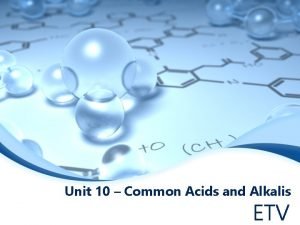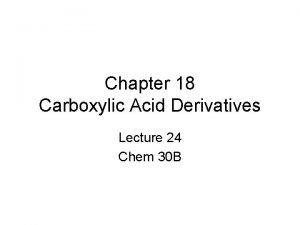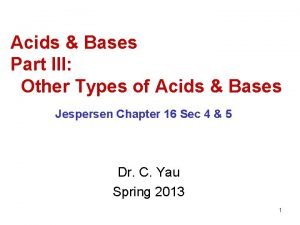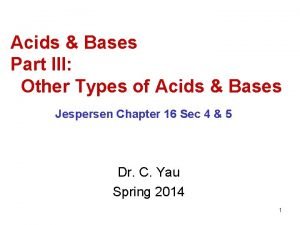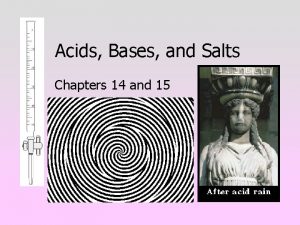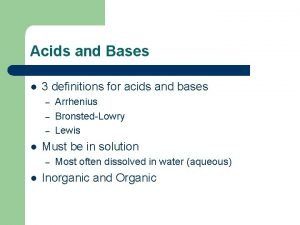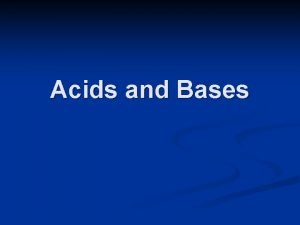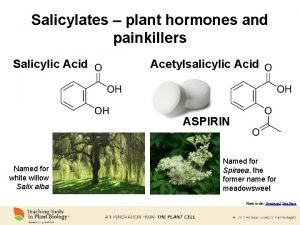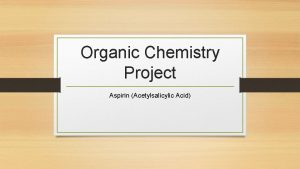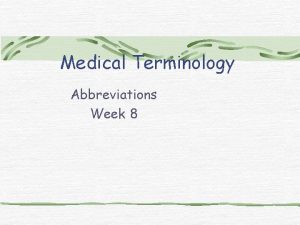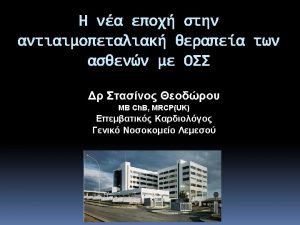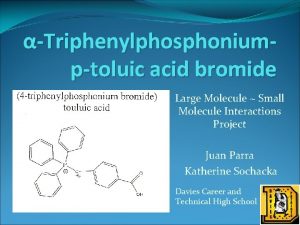Molecule Monday The Wonder Drug Acetylsalicylic acid History









- Slides: 9

Molecule Monday The Wonder Drug

Acetylsalicylic acid

History of Aspirin • Ancient Egyptians (1543 BC papyrus) knew about the medicinal properties of willow bark extracts (salicin). • Hippocrates also recommended it for childbirth and fevers. • In 1838, an Italian chemist isolates a derivative of salicin, salicylic acid.

Aspirin in 1800 s • Salicylic acid was too strong an acid, which led to side effects. • 1853: Gerhardt is first to synthesize acetylsalicylic acid. • 1897: Felix Hoffman develops a better synthesis while working at Friedrich Bayer Co.

Aspirin • Clinical trials were delayed, because the pharmacology team was more excited about Hoffman’s more recent creation: diacetylmorphine, which they had named heroin. • Clinical trials of acetylsalicylic acid were finally done, and it was marketed worldwide in 1899 as aspirin.

Aspirin in 1900 s • Bayer suffered legal troubles as a result of WWI, sales of aspirin slumped. • Spanish Flu pandemic of 1918 boosted aspirin’s sales and reputation. • Post-WWII, competition from acetaminophen and ibuprofen drastically cut aspirin’s sales.

Aspirin in 1980’s • Aspirin is connected to Reye’s syndrome in children, which led to warning labels being required. • However, later that decade evidence of aspirin’s ability to reduce risk of blood clots (strokes and heart attacks) led to a revival of aspirin sales.

Mechanism of Action • 1971: aspirin is found to inhibit cyclooxygenase, a group of enzymes that synthesize prostaglandins. • 2011: correlational studies suggest that regular aspirin use reduces cancer deaths.

Aspirin’s Activities • • • Analgesic Anti-inflammatory (like all NSAIDs) Antipyretic Antithrombotic Anticancer (? ? ? ) 18 million kg produced per year in U. S. alone!
 Different methods of adulteration of crude drugs
Different methods of adulteration of crude drugs 9-which acid is not considered a strong acid?
9-which acid is not considered a strong acid? Example of acid-fast bacteria
Example of acid-fast bacteria Carboxylic acid to acid anhydride
Carboxylic acid to acid anhydride Example of acid-fast bacteria
Example of acid-fast bacteria Identifying lewis acids and bases practice
Identifying lewis acids and bases practice Lewis acid bronsted acid
Lewis acid bronsted acid Is sr(oh)2 a base
Is sr(oh)2 a base Is chloric acid a strong acid
Is chloric acid a strong acid Is sulfuric acid weak
Is sulfuric acid weak

